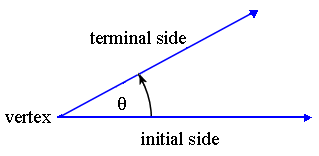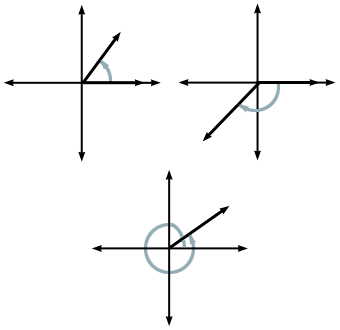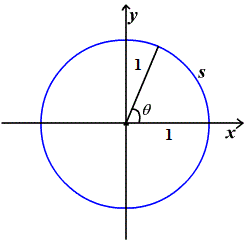Section 7.1 - Angles: Degree and Radian Measure
Section Objectives
- Describe and draw angles.
- Use degree and radian measure.
- Find coterminal angles.
- Compute the length of a circular arc.
- Use linear and angular speed in applications.
Two rays that share a common endpoint form an angle. The angle opens in the direction from the initial side to the terminal side.

An angle is in standard position if its initial side lies along the positive -axis.

Positive angles open counterclockwise, while negative angles open clockwise.
All angles that share the same initial and terminal sides are called coterminal angles.
Degree Measure
An angle whose initial and terminal sides coincide and is associated with one complete rotation about a circle has a degree measure of . Angles associated with portions or multiples of a rotation are assigned degree measure proportionally.
For example...
- A angle is associated with of a circle rotation.
- A angle is associated with of a circle rotation.
- A angle is associated with of a circle rotation.
Radian Measure
The radian measure of an angle is the arc length from the subtended angle along a unit circle. This is not as complicated as it sounds, but it takes some practice because it is very different from degree measure. Radian measure is the angle measure used in advanced mathematics.

Since the circumference of the unit circle is , there are radians for every :
rad =
When convenient, angles in radian measure are often written in terms of . We will always do so for multiples of .
- etc.
Arc length and Angular Speed
Radian measure corresponds to arc length on the unit circle. If the circle has radius (), then the arc length is times as long.
Important facts
- For a circle of radius , the arc length from a subtended angle of radian measure is given by .
- Suppose a particle is moving at a constant speed along a circle. The linear speed of the particle is the arc length traveled divided by the time: . The angular speed is the angle (in radians) through which the particle travels divided by the time: .